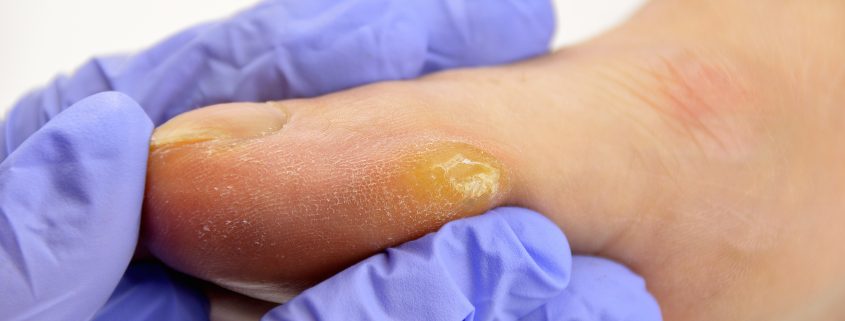Corn vs Callus – what’s the difference?
I write these blogs to try and teach you about Podiatry and how it can really help. In order to help, I want to answer commonly asked questions I often face in clinics. One of the more popular ones is: what is the difference between a corn and a callus?
So lets start with callus. It is more commonly known as hard skin and is one of the most common issues podiatrists treat in a clinic. It is created as a response to repetitive stress and pressure. As a form of skin protection, the skin cells harden to stop the skin from being damaged. However, over time this protection can create a thick layer- increasing pressure and creating discomfort. On the heels, callus can sometimes cause skin to pull and splits or skin breaks to occur. These can be very sore and need immediate management. Callus can form anywhere, from the soles of the feet to the tips of your fingers. For some people, they live with callus their whole lives without having any pain, for others it is severely uncomfortable.
A corn, however, is slightly different. A corn is a common skin lesion which form into acute areas of hard skin. Often feeling like a stone in the skin, corns can range from mildly uncomfortable to agonisingly painful. They can become inflamed and in some cases breakdown the soft skin beneath, to cause a wound and ulceration. They develop in response to friction and pressure in very specific areas of the feet. Like callus, they develop as a natural skin response to try and protect the skin. Though normally hard on touch, pain can come from between the toes where the corns are soft because of the excess moisture in the gaps. These are known as soft corns. The pain from corns comes from the hard stone like callus pressing against the soft sub tissue layers of the skin.
So the answer to the question- both callus and corns are formed in similar ways, corns are made from localised callus development in very specific areas. Callus can develop where there is general friction and pressure, but corns always develop in smaller more localised high pressure sites. On the whole, corns cause more pain than the callus build ups, but thick callus build up can still cause pain especially if cracks develop from the thickened tissue.
Podiatrists, especially at FootPro Podiatry provide slow, gradual and careful debridement and enucleation of both callus and corns. After the painless treatment, instant relief can be felt. You will then be provided with advice about how to stop the corns and callus from developing again in the future and provide offloading devices such as wedges, orthotics or padding to help further relieve the pressure that created the issues. However, these don’t necessarily cure your issues and regular treatments may be necessary to ensure you are comfortable and are not in pain when you walk.
Have any questions? Why not contact me at info@footpropodiatry.co.uk.




Leave a Reply
Want to join the discussion?Feel free to contribute!